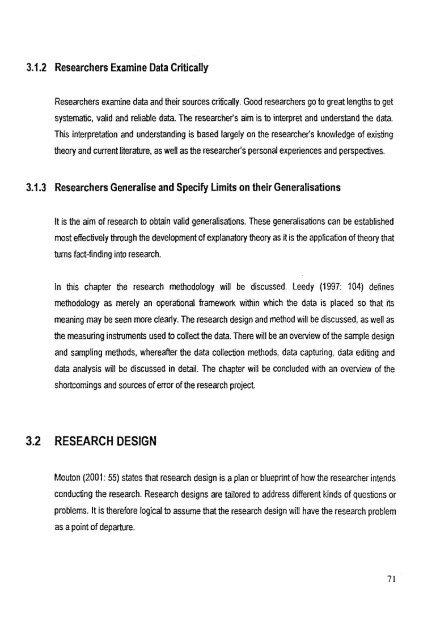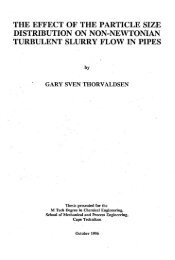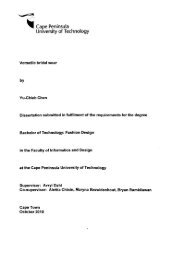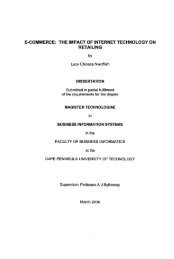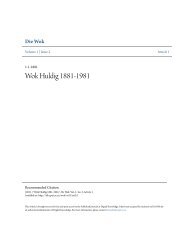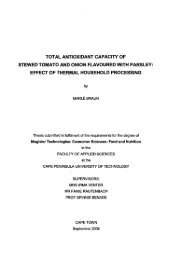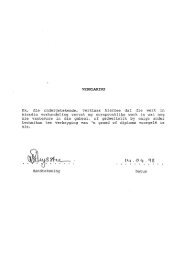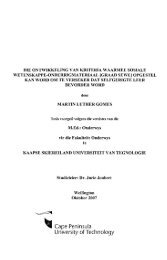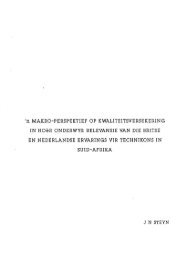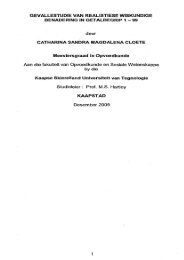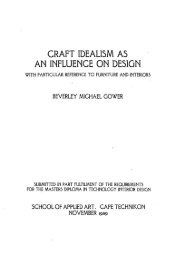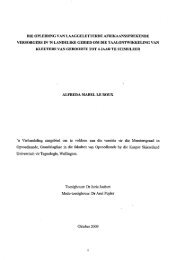an investigative analysis of the psychological characteristics and job ...
an investigative analysis of the psychological characteristics and job ...
an investigative analysis of the psychological characteristics and job ...
You also want an ePaper? Increase the reach of your titles
YUMPU automatically turns print PDFs into web optimized ePapers that Google loves.
3.1.2 Researchers Examine Data Critically<br />
Researchers examine data <strong>an</strong>d <strong>the</strong>ir sources critically. Good researchers go to great lengths to get<br />
systematic, valid <strong>an</strong>d reliable data. The researcher's aim is to interpret <strong>an</strong>d underst<strong>an</strong>d <strong>the</strong> data.<br />
This interpretation <strong>an</strong>d underst<strong>an</strong>ding is based largely on <strong>the</strong> researcher's knowledge <strong>of</strong> existing<br />
<strong>the</strong>ory <strong>an</strong>d current literature, as well as <strong>the</strong> researcher's personal experiences <strong>an</strong>d perspectives.<br />
3.1.3 Researchers Generalise <strong>an</strong>d Specify Limits on <strong>the</strong>ir Generalisations<br />
It is <strong>the</strong> aim <strong>of</strong> research to obtain valid generalisations. These generalisations c<strong>an</strong> be established<br />
most effectively through <strong>the</strong> development <strong>of</strong> expl<strong>an</strong>atory <strong>the</strong>ory as it is <strong>the</strong> application <strong>of</strong> <strong>the</strong>ory that<br />
tums fact-finding into research.<br />
In this chapter <strong>the</strong> research methodology will be discussed. Leedy (1997: 104) defines<br />
methodology as merely <strong>an</strong> operational framework within which <strong>the</strong> data is placed so that its<br />
me<strong>an</strong>ing may be seen more clearly. The research design <strong>an</strong>d method will be discussed, as well as<br />
<strong>the</strong> measuring instruments used to collect <strong>the</strong> data. There will be <strong>an</strong> overview <strong>of</strong> <strong>the</strong> sample design<br />
<strong>an</strong>d sampling methods, whereafter <strong>the</strong> data collection methods, data capturing, data editing <strong>an</strong>d<br />
data <strong>an</strong>alysis will be discussed in detail. The chapter will be concluded with <strong>an</strong> overview <strong>of</strong> <strong>the</strong><br />
shortcomings <strong>an</strong>d sources <strong>of</strong> error <strong>of</strong> <strong>the</strong> research project<br />
3.2 RESEARCH DESIGN<br />
Mouton (2001: 55) states that research design is a pl<strong>an</strong> or blueprint <strong>of</strong> how <strong>the</strong> researcher intends<br />
conducting <strong>the</strong> research. Research designs are tailored to address different kinds <strong>of</strong> questions or<br />
problems. It is <strong>the</strong>refore logical to assume that <strong>the</strong> research design will have <strong>the</strong> research problem<br />
as apoint <strong>of</strong> departure.<br />
71


